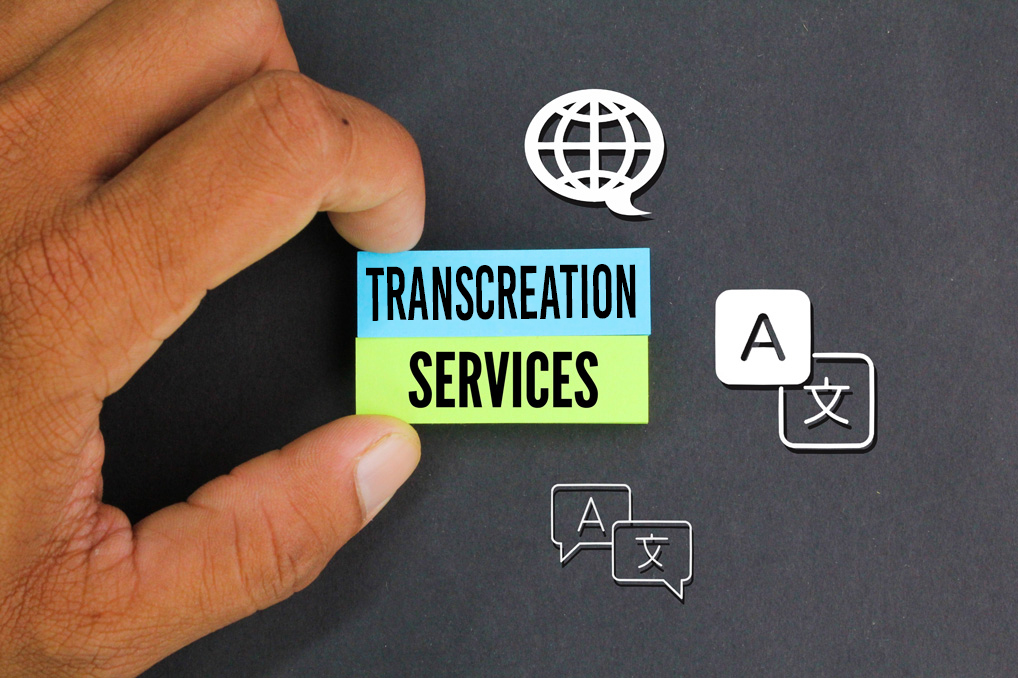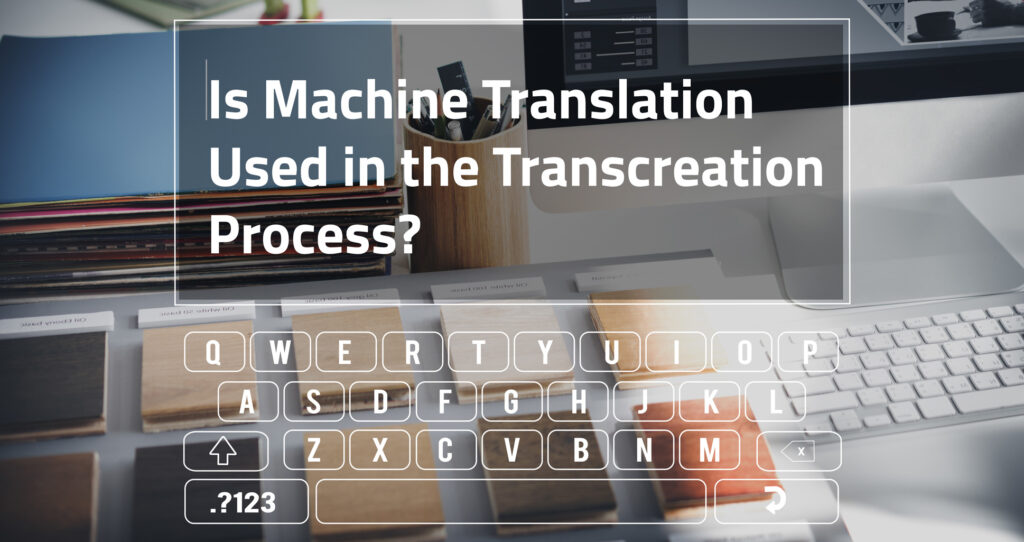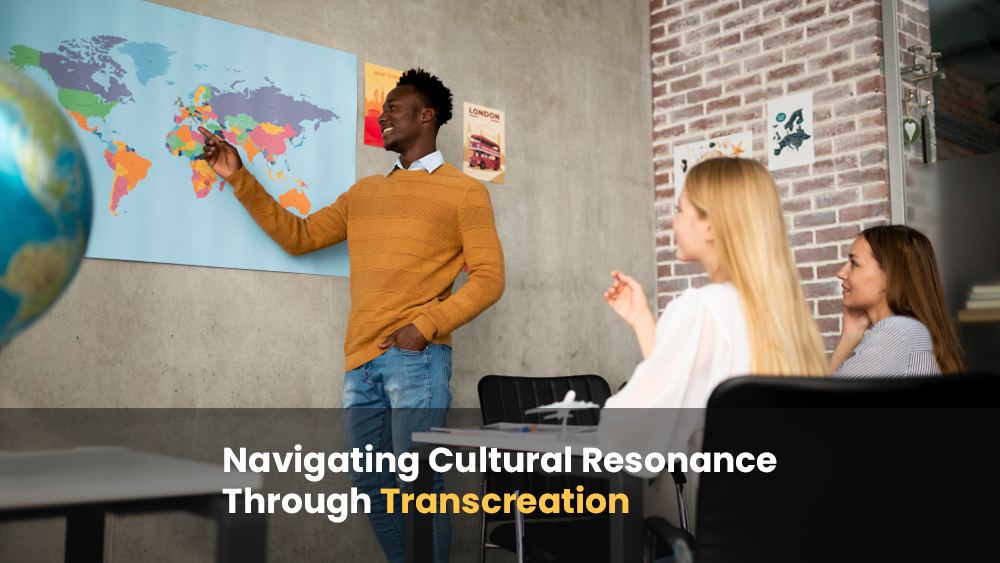Global businesses now have a wide range of tools and processes to gain entry into new markets worldwide. In this setting, communication knows no borders, and the art of conveying a message goes beyond literal translations. With this being said, How can businesses reach new audiences more effectively?
Transcreation is a dynamic process that goes beyond words. It’s used to delve into the target audience’s cultural nuances, emotions, and context. In this article, we review what transcreation is, how it differs from translation, and why it has become an essential tool for international communication.
Table of Contents
What Is Transcreation?
Transcreation is a specialized linguistic adaptation that goes beyond traditional translation methods. It focuses not only on converting words from one language to another but also on adapting content from one language/culture to another. The process maintains the content’s existing intent, tone, and style.
In transcreation, the goal is to maintain the intended meaning of the source material while meeting the cultural and emotional context of the target audience. The process requires a deep understanding of cultural nuances, idiomatic expressions, and emotional undertones that may not have a direct equivalent in the target language.
You may still be asking, “What’s transcreation?” We understand the concept can be challenging, so here’s a quick example. Say you have a piece of marketing material and want to use it to reach a target audience in another region of the world. You can have the content translated word-for-word. However, the message does not resonate with the target audience. On the other hand, with transcreation, you take that same marketing material and transform it into relevant content for the target market.
Transcreation doesn’t focus so much on literal translation; instead, the emphasis is put on the intent of the material and how the target audience will receive the message. The process understands that words carry cultural weight and emotional significance. A successful transcreation project captures these elements to evoke a response in the target audience similar to the original content in the source cultural context.
How is Transcreation Different from Translation?
While transcreation and translation seem like similar processes, each is a distinct process that serves a very different purpose in language services. Here’s a comparison of how transcreation is different from translation:
Scope and Purpose
Translation mainly focuses on converting words and sentences from one language into another. The process preserves the meaning and intent of the source text. Here, the emphasis is on linguistic accuracy.
Transcreation services, on the other hand, go beyond linguistic translation to adapt content to a new cultural context. Here, the main goal is to evoke the same emotional connection in the target market as the original content in the source culture.
Creativity and Adaptation
Translation involves a more literal rendering of the text from the source language into a target language. The goal is to maintain the original meaning of the source text. The process is only somewhat creative.
However, transcreation requires a high degree of creativity. It involves not only translating words but also adapting the content to resonate with the target audience both culturally and emotionally.
Meaning and Perception
Translators focus on the literal translation of the original content as closely as possible to the source material.
On the other hand, transcreation is more about crafting the content so that it is perceived in a particular (intended) way by the target market.
Suitability for Different Content
Translation is best for technical, legal, or informational content where precision and accuracy are essential.
Transcreation services are ideal for creative content such as marketing materials, advertisements, slogans, and any content where the impact and emotional connection are crucial.
Audience Engagement
Translation aims to convey information accurately, though it may not evoke the same emotional response across cultures.
Transcreation strives to create emotional impact, fostering a deeper connection with the audience by adapting the content to their cultural preferences and nuances.
As you can see, translation focuses on maintaining the original meaning of the source material (literal word-for-word translation). At the same time, transcreation is a more creative process that considers culture and emotions to convey a message to the target audience.
When to Choose Transcreation Services?

Transcreation services are more appropriate where the goal is to create tailored, culturally resonant messaging to connect with the target audience on a deeper level. Here are some instances where transcreation services are especially beneficial:
Marketing and Advertising Campaigns
Transcreation is often used when launching marketing or advertising campaigns, especially those relying on creative and emotional messaging. For instance, in situations where a literal translation may not capture the intended impact or might lead to cultural misunderstandings.
Brand Messaging
These services are also used for brand slogans, taglines, and messaging to carry cultural and emotional connotations. When introducing a brand to a new market and aiming to establish a strong, culturally relevant presence.
Multinational Product Launches
When a business introduces new products or services in diverse markets with distinct cultural backgrounds. And to ensure the product names, descriptions, and promotional materials resonate with local sensibilities.
Creative Content
Transcreation is also required in the translation of creative content such as literature, poetry, or artwork, where the emotional and cultural nuances play a crucial role.
These services are also beneficial when adapting content for global audiences while maintaining the source material’s artistic and emotional integrity.
Choosing transcreation services is about recognizing the need for a more nuanced and culturally sensitive approach to content adoption. It ensures the message crosses language barriers and resonates with the target audience, creating a deeper connection and understanding.
What are the Most Common Issues in Transcreation?
Is a robust process for adapting content across cultures; however, it comes with certain challenges. Some of the most common issues encountered with transcreation include:
Balancing Cultural Sensitivity
Here, the challenge is striking the right balance between cultural adaptation and avoiding stereotypes or cultural insensitivity. The solution is in-depth research into the target culture and collaboration with native speakers to ensure accurate representation.
Brand Consistency
There can be an issue with adapting content to the local culture without compromising the consistency of the brand image. Here, it’s essential to establish brand guidelines and ensure the content aligns with the overall brand identity.
Language Nuances and Idiomatic Expressions
It can be challenging to deal with language nuances, idioms, and expressions that may not have direct equivalents in the target language. So, it’s imperative to find a skilled transcreator with a deep understanding of languages and cultures to overcome these issues effectively.
Subjectivity
The subjective nature of creativity makes it more challenging to ensure that transcreated content resonates with the target audience. The solution is to test the content with native speakers to refine the transcreated materials.
Time Constraints
The transcreation process can be time-intensive, especially for larger projects with tight deadlines. The solution is to plan and allow sufficient time for the transcreation process and to consider these issues early in the project’s timeline.
Cost Considerations
Transcreation services can be more expensive than traditional translation, which has a direct impact on budget considerations. The answer to this issue is to use transcreation services only for those projects that must carry a specific, emotional message from the source language into the target language.
Awareness of these common pitfalls allows for a more strategic and successful approach to transcreation.
Is Machine Translation Used in the Transcreation Process?

While machine translation (MT) has made significant advancements and is widely used for conventional translation tasks, it is not the primary tool for transcreation. Transcreation requires more than a literal translation. It involves a level of creativity, cultural understanding, and emotional resonance that currently exceeds the capabilities of machine translation systems.
Concluding Thoughts
Global communication is an ever-evolving landscape where transcreation emerges as a transformative process that transcends linguistic boundaries and connects with audiences on a deeper level. Transcreation differs from translation and becomes a linguistic art form that allows for more than a literal translation of words.
Transcreation goes beyond conveying information. This process is essential for reaching a diverse global audience with cultural sensitivity, emotional intelligence, and creative insight. Transcreation is a valuable strategy for brands, marketers, and creators seeking to make a lasting, meaningful impact on a globalized world.
Read more
- Should You Translate Your Brand Name?
- Can You Learn English with AI?
- Common Localization Mistakes to Avoid for a Hassle-Free Global Launch
- Beginning with Email Translation and Customization: A Guide for Beginners
- Debunking Common Translation Myths
- The Power of Translation Memory: A Guide
- Global Success for an E-Commerce Marketing
- Bridging Barriers to the Kurdish Language
- Introducing the Languages of the World
- MULTILINGUAL CUSTOMER SUPPORT
- Strategic Insights for Effective Brochure Translation
- Speed and Accuracy in Translation
Transcreation in Global Marketing FAQs
Why is transcreation important in the context of global marketing?
Transcreation is crucial to global marketing because it ensures the message’s intended emotional and cultural impact resonates with the target audience. It allows brands to create culturally relevant and emotionally compelling content, increasing the effectiveness of marketing campaigns.
Can machine translation replace human transcreation services?
While machine translation is useful for literal translation, it cannot capture the cultural nuances, emotions, and creativity essential in transcreation. Human transcreators bring depth of understanding, cultural sensitivity, and creative insight that machines currently cannot replicate.
How do you maintain brand consistency in transcreation?
Brand consistency in transcreation is achieved by using clear brand guidelines and style guides. Transcreators work closely with these references to ensure the adopted content aligns with the brand’s voice, values, and messaging while resonating with the local culture.
Is transcreation only applicable to written content, or does it extend to visual elements?
Transcreation is not limited to written content; it also extends to visual elements. Transcreators may adapt visuals, images, and designs to ensure a cohesive and culturally appropriate message across all mediums.
What challenges do transcreators commonly face in adapting content to different cultures?
Transcreators often face challenges such as accurately capturing cultural nuances, avoiding cultural sensitivities, and effectively conveying the original message’s intent in a way that is relevant and engaging to the target culture.
